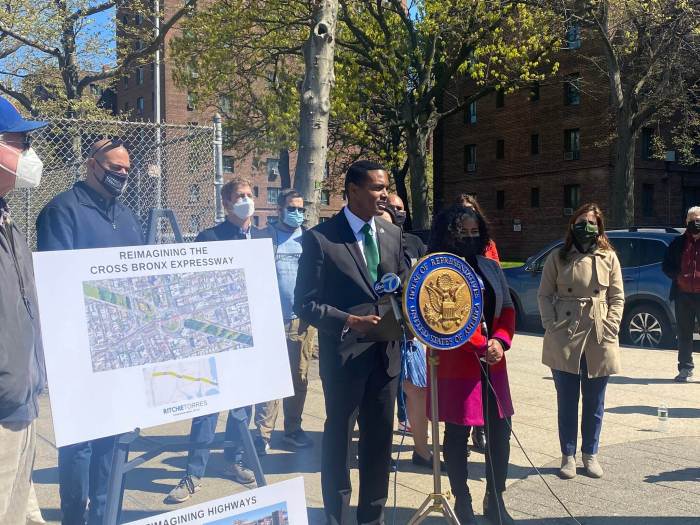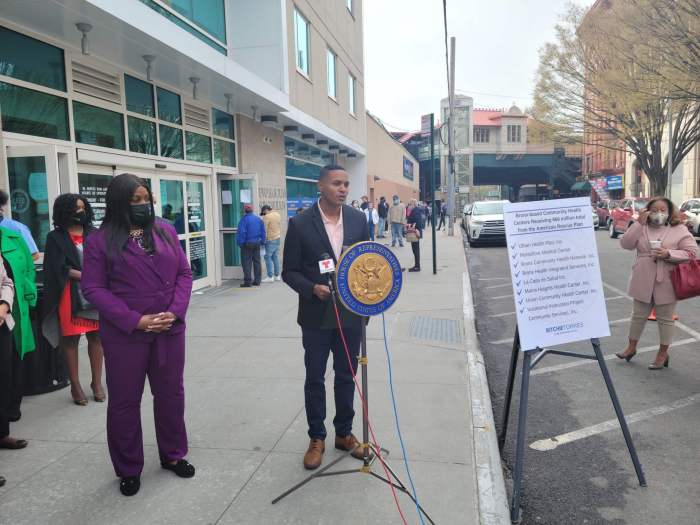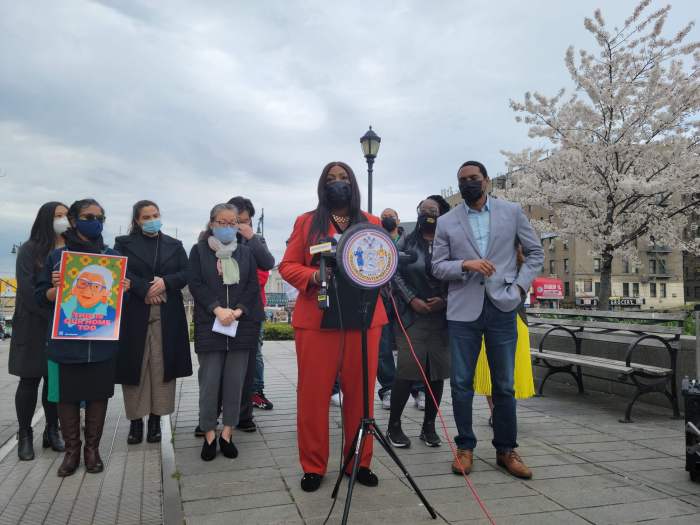Hoping to usher changes to decades-old state law restricting the conversion of vacant, unused office spaces into residential housing units, the 5 Borough Housing Movement’s push for these conversions gained more political support this week.
John Sanchez, executive director of the 5 Borough Housing Movement, says changes are needed at the state level to help streamline the commercial-to-residential turnover, including a change to state law that allows such conversions, lifting a floor area ratio cap that limits the density of NYC-based construction and providing a tax incentive to encourage converted buildings to include affordable housing units.
After three Bronx community boards voiced support for the office-to-residential movement last week, a swath of New York politicos, including U.S.Reps. Ritchie Torres and Adriano Espaillat, have followed suit on Wednesday.
“New York is confronting the greatest affordability crisis since the Great Depression,” said Torres, whose congressional district encompasses the South Bronx and areas in the northwest corner of the borough. “The need for a dramatically expanded housing supply to overcome both housing insecurity and homelessness has never been more urgent. I commend Governor Hochul for putting housing where it belongs in the state budget: front and center.”
U.S. Rep. Gregory Meeks, of Queens, and Manhattan Borough President Mark Levine have also thrown their support behind the movement as well. Advocates of office-to-residential conversion say that these conversions can bring about more housing, without the side effects of displacement and gentrification that new development can bring.
While most of the large-scale conversion of commercial buildings to residential use would be implemented in Manhattan, there is significant opportunities for these conversations in The Hub, the Bronx’s commercial corridor, and downtown Flushing in Queens.
In December, Mayor Eric Adams and Gov. Kathy Hochul announced a plan to address the needs of post-pandemic New York by creating mixed-use neighborhoods in central business districts to draw more residents, businesses and tourists.
The city estimates converted office space could create as many as 20,000 new homes for around 40,000 people over the next decade. One of the recommendations is allowing most office buildings constructed in 1990 or before to convert, as current regulations limit adaptive reuse of most office buildings built in the 1960s, 1970s and 1980s.
Overall apartment conversions — including those of warehouses, hotels and health care buildings — jumped 25% during 2020-2021, to about 28,000 units, compared to the prior two-year period before the pandemic, according to RentCafe, an apartment search engine company.
Proponents of the office-to-residential conversions pledge to make a significant portion of those units permanently affordable.
More than half of New Yorkers are rent-burdened and rents in the city have risen 30% since 2015, according to Hochul’s office. Hochul is hoping to construct 800,000 throughout the state new housing units over the next decade.
No hardworking New Yorker should ever have to worry about providing their family a safe and affordable place to live,” said Espaillat, who represents a district split between Manhattan and the Bronx. “I am glad to see cooperation between state officials and community organizations working together to create innovative and necessary ways to expand affordable housing options in New York City.”
This article was updated on Feb. 23 at 9:58 a.m.
Reach Robbie Sequeira at rsequeira@schnepsmedia.com or (718) 260-4599. For more coverage, follow us on Twitter, Facebook and Instagram @bronxtimes.
























